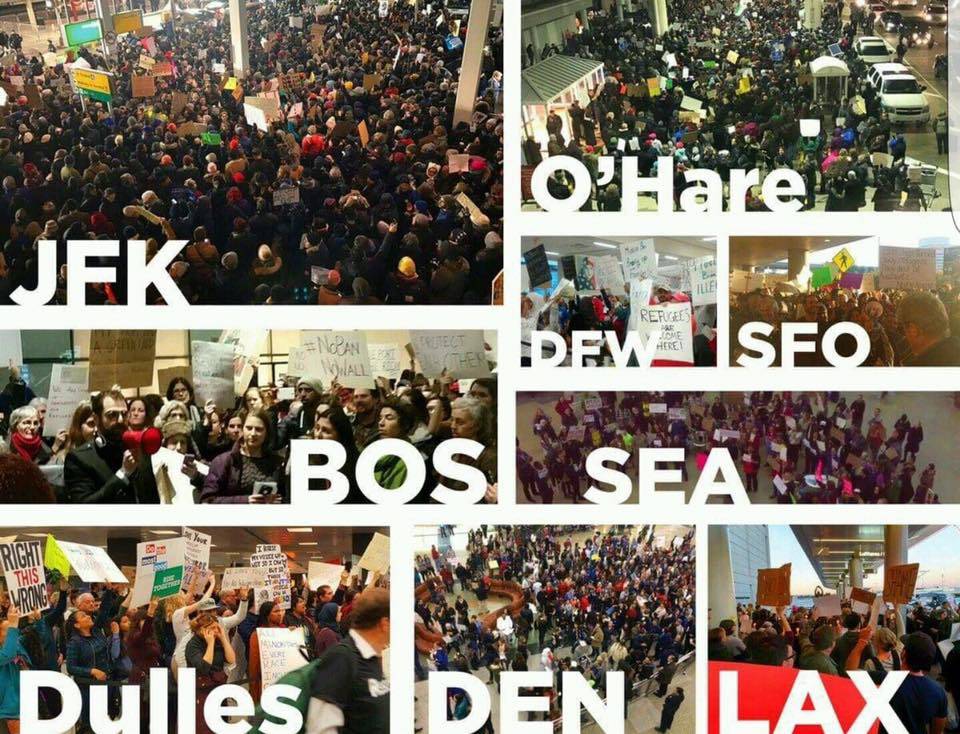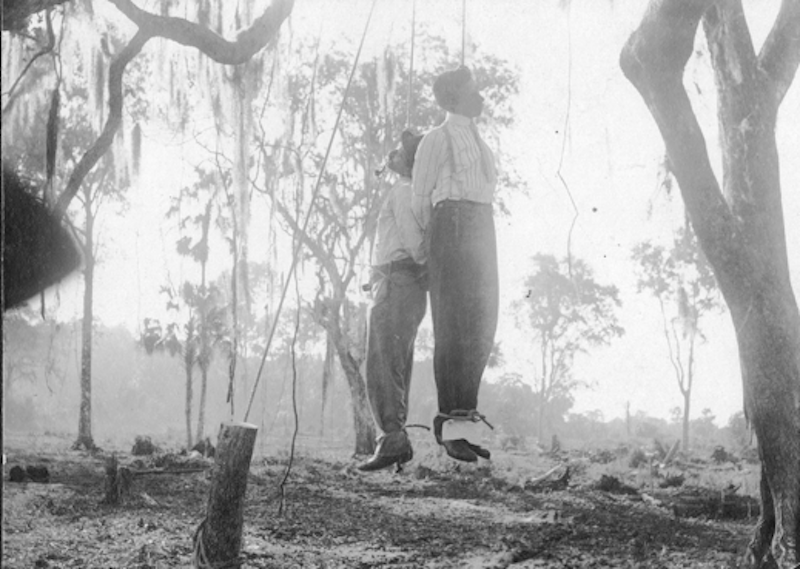"Immigration Ban." An Italian American Perspective
It seems that every generation of Americans desperately needs an outsider to fear. We eagerly accept—even devour—salacious stories of Chinese opium dens, Irish drunkards, Italian Mafiosi, Latino gang members, Mexican rapists and Muslim terrorists. The president’s Executive Order is formally titled “Protecting the Nation From Foreign Terrorist Entry into the United States.” But in our new reality of “alternate facts” please note that not one act of terrorism has been committed on American soil by recent refugees. With perverse irony the Executive Order only confirms the propaganda of Islamic terrorists that the United States is at war with Islam.
On the other hand, Americans often point with pride to the history of accepting immigrants, as embodied (literally) in the figure of the Statue of Liberty in New York Harbor. Surely no other country on earth owes its success as much to immigrants as the United States; it’s just that we often forget this running thread of our own history. The most common betrayal—which we hear today—is “Yes, but WE weren’t coming here to kill Americans.”
The first person affected by the EO was Hameed Khalid Darweesh who spent over a decade working with the American military in Iraq, at great danger to himself personally and to his family. He had been vetted over two years by military and immigration authorities. Simply from a practical point of view, military authorities said the ban would cripple their ability to recruit assistance in Muslim countries if people know they won’t be accepted into America even after a rigorous vetting.
Italian Americans have a particular responsibility in this new (or old) political landscape. The mass wave of immigration from southern Italy (1880-1924) was met with trepidation, fear, anger and hatred. (See William Connell and Fred Gardaphé’s collection of Essays Anti-Italianism). Italian Americans struggled to find their way as Americans while retaining custodianship of their native culture. This delicate balancing act required us to sometimes forget where we came from, and often even required a change in our very names (“Giovanni” became “Johnny” in school; Frank Sinatra’s father became “Marty O’Brien” to get boxing matches; Walden Robert Cassotto became “Bobby Darin”; writer Francesca Vinciguerra became “Frances Winwar”).
I have just returned from the Christmas season in Naples where the tradition of the presepio is alive and flourishing. As I marveled at these works of folk art and popular culture, I often thought of that original refugee Semitic, Middle Eastern family and how today, in a country that purportedly loses no occasion to declare itself “Christian” would now turn them away. A modern parallel could be seen in the tragic plight of the SS Saint Louis, a steamship crowded with more than 900 Jewish refugees in 1939, who were refused entry into the United States. One argument advanced at the time—hard to believe--was that the Jews might be Nazi spies! The Syrian and Muslim families that we reject today would have become the “American Jews” of the future: fully integrated and contributing their extraordinary talents and energies in the perpetual re-imagining of what it is to be American. We have taken what may be our single greatest resource and are squandering it without any consideration of our history, image across the world or our collective futures.
For example: In 1938 Enrico Fermi was awarded the Nobel Prize in Physics. Soon after accepting his award in Stockholm, Fermi refused to return to Fascist Italy, which had just promulgated anti-Semitic legislation (Fermi’s wife was Jewish) and sought refuge in the United States. In December 1941, when Fascist Italy declared war on the United States, more than 600,000 Italian Americans were declared “enemy aliens” and placed in internment camps. (Unlike Japanese Americans who spent the entire war period in the camps, the Italian America ns were released on Columbus Day 1942.) With bitter irony, some people in the camps had sons who were fighting for the US armed forces. With historical irony, Fermi was a key figure in the development of the atomic bomb that ended the war in the Pacific.
For almost two years, I have spoken and written about the dangers of a possible Trump presidency, from the perspective of a scholar of Italian fascism and anti-fascism, warning that Donald Trump exhibited many of the psychological and political traits of fascism. Tragically, Umberto Eco’s 1995 essay on “Ur-Fascism” is almost a blueprint for the Trump campaign and administration. At times, I was criticized for making an erroneous historical comparison. But recall the moment in the second debate when Trump threatened to jail Hillary Clinton? I tweeted at the time that the remark was proof that Trump didn’t know (or refused to recognize) the difference between a democracy and a dictatorship. Or at press secretary Sean Spicer’s first press conference in which he warned that the new administration would “hold the press accountable.” Spicer either doesn’t know or knows all-too-well that in a democracy, the press holds the government accountable; it’s only in a dictatorship that the government holds the press accountable. If you don’t know the difference, you don’t understand a basic premise of American society.
For years after the war, Italian Americans continued to suffer discrimination. Yet by the 1980s we had supposedly “made it.” Italian Americans could boast of accomplishments in all fields of American life, from sports to politics. Yet at what price? How and why did our heroes change from Fiorello LaGuardia to Antonin Scalia (who, were he alive, would probably vote in favor of this Executive Order, notwithstanding his judicial philosophy of “originalism”). And our prominenti? A look this morning at the websites of NIAF, OSIA and UNICO revealed not one word of protest against the president’s Executive Order. Have we forgotten our own history? Have we decided that this generation of immigrants is so different from us that they merit no human solidarity?
Perhaps this argument of the political and human evolution of Italian Americans can best be summed up with two photographs. The first is from Tampa, Florida and shows the 1910 lynching of Castenge Ficarrotta (with pipe placed in his mouth after hanging) and Angelo Albano simply for being Italian. The second is of Italian Americans lining the streets of Bensonhurst, Brooklyn during the protest march of African Americans after the murder of Yusuf Hawkins in 1988. (The photos come from the forthcoming book edited by William Connell and this author, The Routledge History of Italian Americans.)
* Stanislao G. Pugliese is professor of modern European history and the Queensboro Unico Distinguished Professor of Italian and Italian American Studies at Hofstra University.




































Comments
In reply to Mr. Sciame's comment regarding Pugliese article